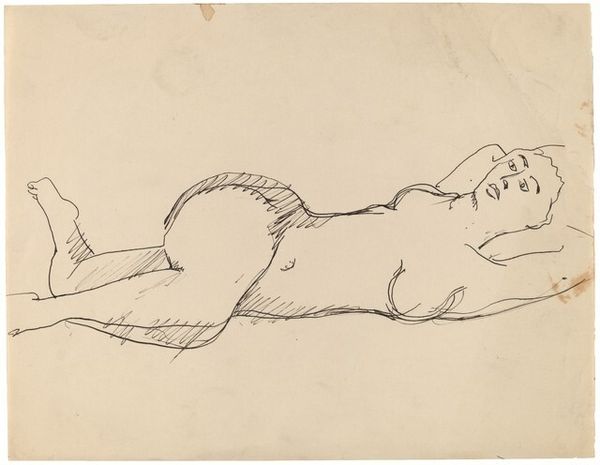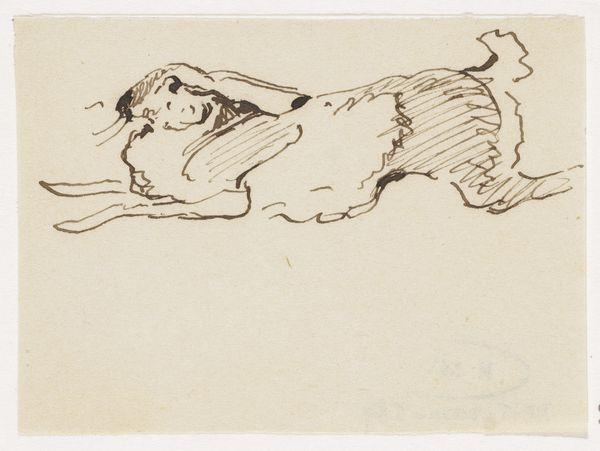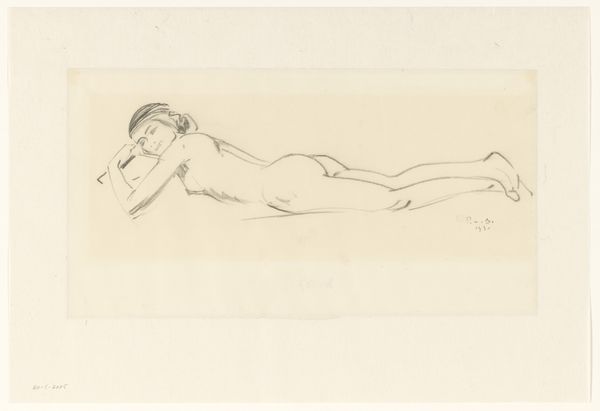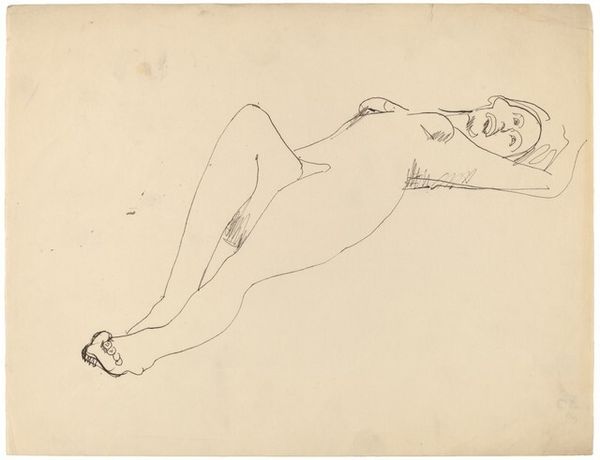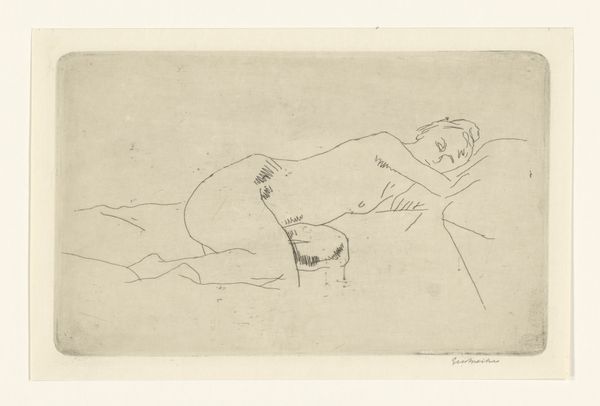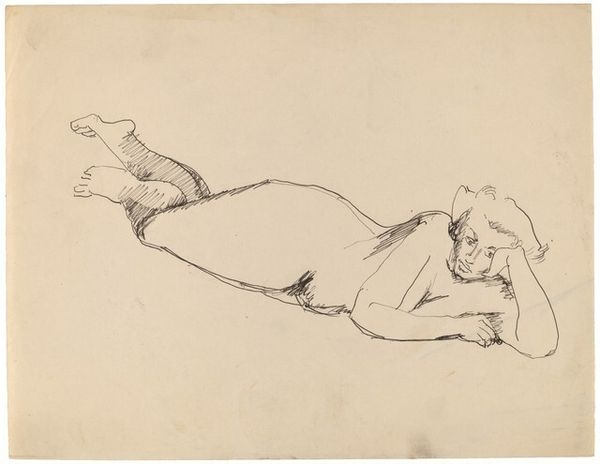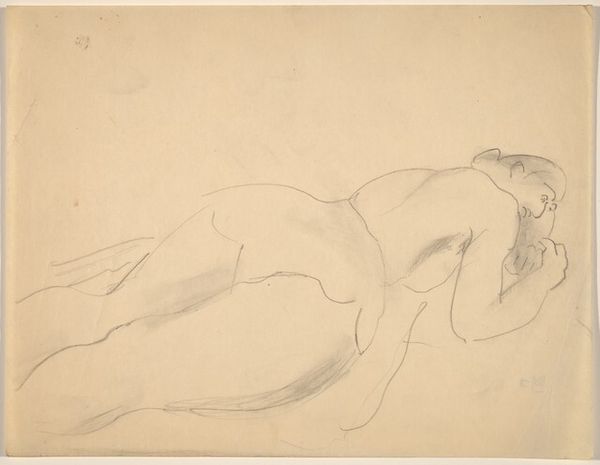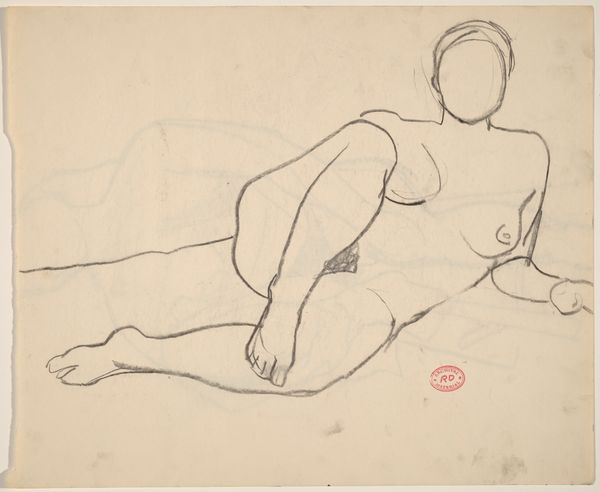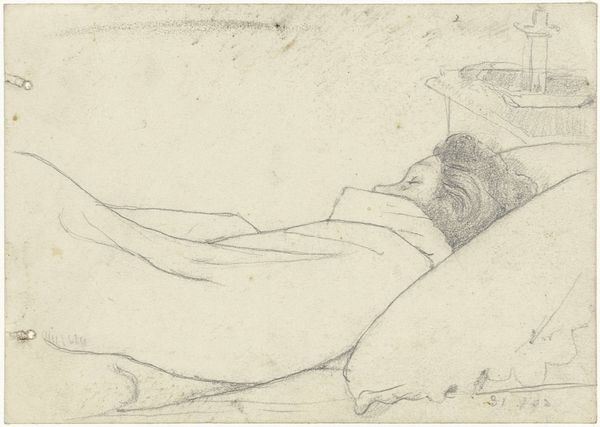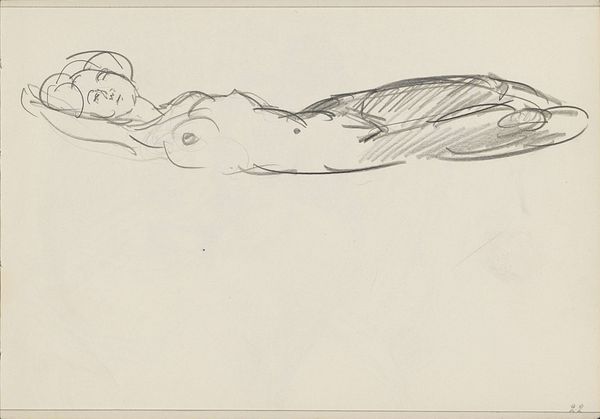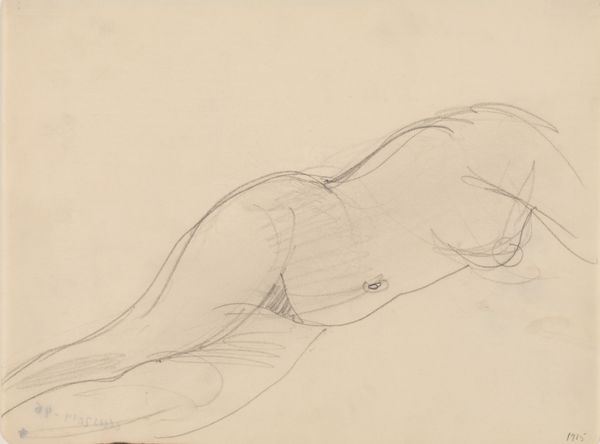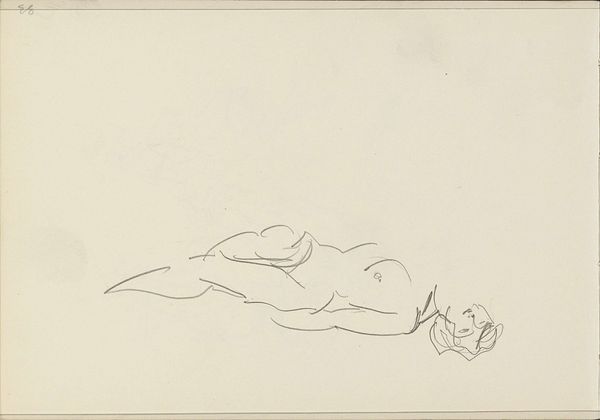
drawing, graphite
#
portrait
#
17_20th-century
#
drawing
#
figuration
#
expressionism
#
line
#
graphite
#
nude
Copyright: Public Domain
Curator: I’m struck by the vulnerability conveyed in this drawing; there's a certain tenderness, a private moment revealed. Editor: Yes, a sketch indeed, raw, unfinished; the graphite lines barely contain the form, suggesting a fleeting impression, almost like capturing a memory. Curator: This graphite drawing, "Reclining Nude," comes to us from Alexej von Jawlensky, created around 1912. It's housed at the Städel Museum. It offers an interesting glimpse into Jawlensky’s Expressionist phase, before he became primarily known for his vibrant, almost iconic faces. The reclining nude figure has long held symbolic significance— from representing classical ideals of beauty to, as in this case, an exploration of psychological states. Editor: Before his exploration of the icon, precisely. I'm struck by the composition. The model's posture is almost fetal, curled and compact within the frame. The minimal use of shading emphasizes the contours. A very compressed kind of rendering of space. It creates an effect that borders on claustrophobic even as it portrays what looks like repose. The short lines seem to vibrate, disrupting the solidity. It feels unresolved and quite modern for the time. Curator: Indeed, and one could interpret the drawing through the lens of early 20th-century anxieties about the body and representation. Nudity becomes less about idealized form and more about raw, almost unmediated experience. What comes across most powerfully for me is its sense of unease and introspection that resonates powerfully in relation to early expressionistic form, not a passive objectification. The symbol speaks volumes, resonating at once as private and publicly displayed for critical examination. Editor: Absolutely. And that unease arises precisely from the tension between the subject matter—the traditional nude—and the style of execution, so starkly modern. The hatching and rough outlines create an unsettled, unstable effect, far removed from the academic tradition of smooth, idealized forms. Almost an outline that is trying to hold onto itself. It also feels very fragile because of that, like she could unravel with a wrong move. Curator: That is precisely the quality that is remarkable about its creation, the delicate representation. Editor: Considering Jawlensky’s trajectory toward more abstract forms later in his career, this piece offers a compelling point of comparison. Curator: Precisely, his trajectory shows a shift from portraying figures as emblems toward explorations of deeper symbolic concepts. Editor: It leaves one to wonder where this artistic pathway would have taken him as we pause to admire what he created in the brief moment.
Comments
stadelmuseum about 2 years ago
⋮
In 1912, Jawlensky drew the female nude in numerous and ever new variations. This study on thin Japanese paper dates from that phase as well. It derives its impact from the contrasts between the different graphic devices: whereas concentrated, clear, sharp lines describe the contour of the reclining figure’s body, wider, somewhat loosely placed, jagged strokes create shade and a sense of depth. Through the intersection of these two types of line, the body merges with its surroundings. The face is stylized to such an extent as to look virtually planar, but the body—despite its reduction to contour lines—possesses a three-dimensional quality.
Join the conversation
Join millions of artists and users on Artera today and experience the ultimate creative platform.
